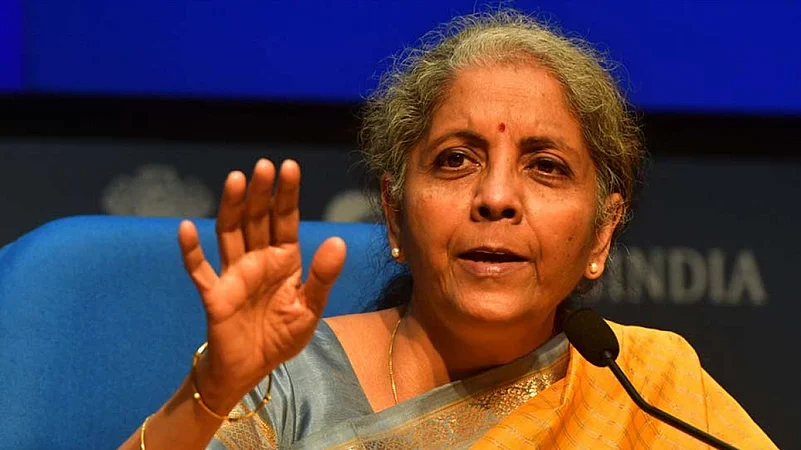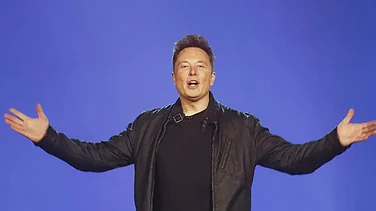Finance Minister Nirmala Sitharaman on Tuesday said the Russia-Ukraine tension and a surge in crude oil prices pose risk to the financial stability of the country. She said the government is closely monitoring the situation, at a two-day post-Budget outreach programme in the country's financial capital.
On Tuesday, Brent crude prices hit $96.7 per barrel, the highest it went since September 2014. India’s oil demand has been estimated to be at 214.5 million tons in the year beginning April 1, as per the Petroleum Planning and Analysis Cell of the oil ministry.
An increasing fuel bill would have a direct bearing on India’s larger macro-economic stability. Retail inflation in India rose to a seven-month high of 6.01 per cent in January, breaching the upper tolerance level set during former RBI governor Raghuram Rajan’s tenure. The rise was mainly on account of high food inflation, which jumped to a 14-month high of 5.43 per cent, along with a high base.
Advertisement
Inflation in the wholesale prices in January softened to 12.96 per cent from 13.56 per cent a month ago, but it has been in double digits for ten consecutive months, putting pressure on the expenditure capacity of consumers.
Rising fuel prices’ direct impact would be on consumption, which was already impacted by the pandemic. The low level of consumption is evident from the government estimates, which pegs the private final consumption expenditure (PFCE)—the expenditure incurred on the final consumption of goods and services by the resident households and non-profit institutions serving households—for 2021-22 at Rs 80.81 lakh crore, down from 2019-20 level of Rs 83.22 lakh crore.
“If elevated oil prices sustain for 12 months at a row, it would impact consumption. If spending on fuel products increases, it would reduce purchasing power. There is always a negative correlation between higher fuel prices and overall consumption. Key would be to see how long the elevated oil prices sustain,” Anubhuti Sahay, senior economist at Standard Chartered Bank, said.
Advertisement
The Economic Survey 2021-22 has projected India’s GDP to grow in real terms by 8.0 to 8.5 per cent in 2022-23 based on the assumption that oil prices would be in the range of $70-$75 per barrel, among other things.
India’s current account deficit, the difference between imports and exports of goods and services, for the second quarter ended September 2021 (Q2FY22) was at $9.6 billion, accounting for 1.3 per cent of GDP. According to ICRA, the current account deficit is expected to be in excess of $25 billion in Q3 FY22, rivalling the size of the full-year CAD in FY20. For the year as a whole (FY22), the CAD is likely to be at $40-45 billion, or around 1.4 per cent of GDP.
“Crude in the $100-110 band for a couple of weeks would hitless. But if it persists at that range for a longer time it's a worry. Crude remaining in that price range for a long time would impact the current account deficit, inflation, and fiscal deficit. Current account deficit will have an impact on currency and inflation on infrastructure,” according to Devendra Pant, chief economist, India Ratings & Research.
Rising oil price is already a problem in the sense that retail prices of fuel have not been revised in the last couple of months because of the elections. “The fact that we've gone to the 90s, and we haven't done anything means that there's definitely going to be a revision in terms of the overall prices of fuel. But there could be a situation where the price could move towards $110-120 per barrel. This is something that actually was mentioned in some of the forecasts. So, therefore, we could be talking about the price of crude oil going up by 10 to 20 per cent from the current level,” Madan Sabnavis, chief economist at Bank of Baroda said.
Advertisement
According to the Union Budget 2022-23, petroleum subsidies have been estimated to decline by 11 per cent to Rs 5,813 crore during 2022-23 from Rs 6,517 crore in the current fiscal. The budget estimate for direct benefit transfer (DBT) subsidy on liquefied petroleum gas (LPG) for FY23 has been estimated at Rs 4,000 crore. Despite the allocation being an 18 per cent increase on the FY22 revised estimate, it was still significantly less than the Rs 23,666.6 crore spent in FY21.
In the face of rising crude oil prices, the subsidy bill is also expected to go for a toss as there would be consumer pushback against further price rise.















 Just one email a week
Just one email a week